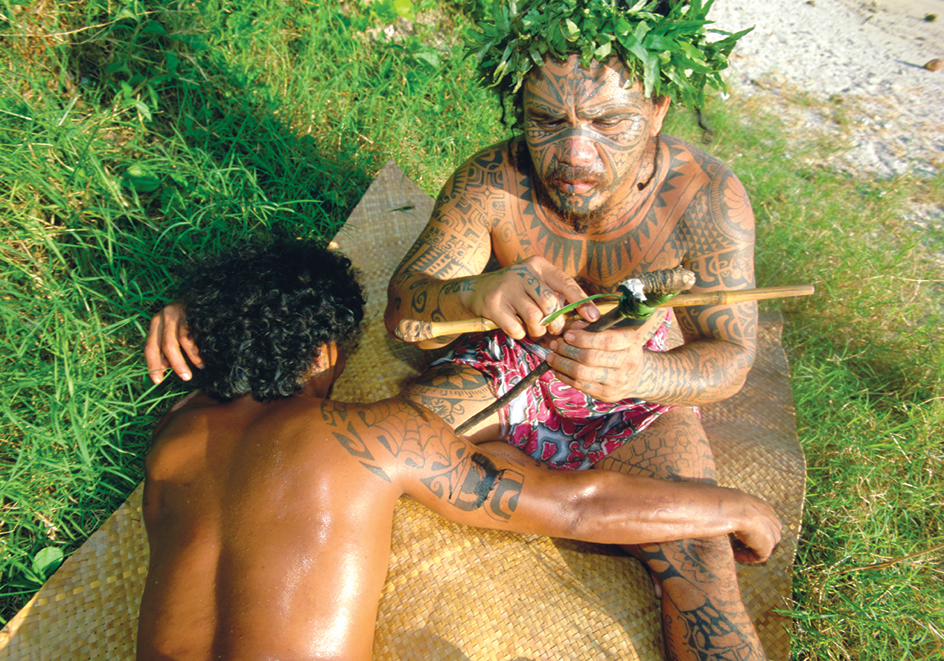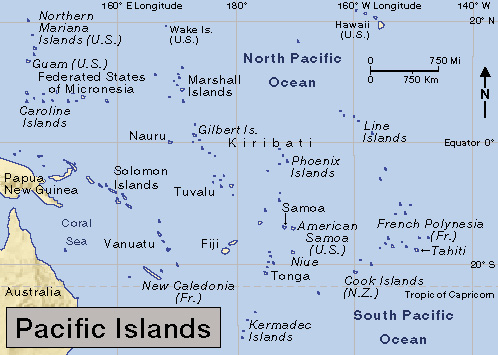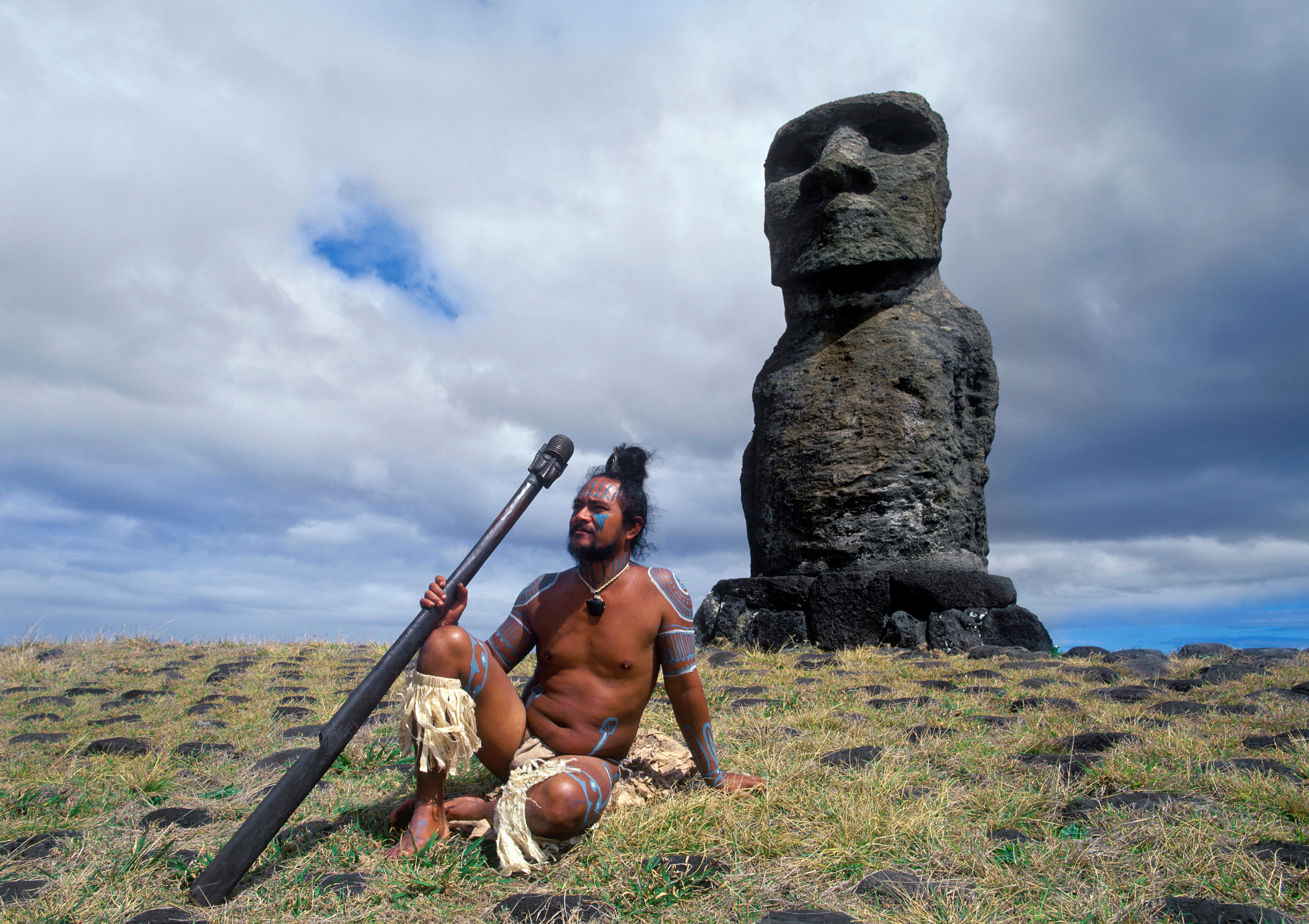Polynesians are groups of people who speak Polynesian languages. These languages are spoken in a region of the Pacific Islands known as Polynesia. Polynesia is a triangular region whose points are marked by (1) Hawaii, (2) Easter Island (also called Rapanui), and (3) New Zealand. This article deals mainly with the roots and spread of Polynesian culture. For much more information on Polynesia and Polynesians, see the article Pacific Islands.

The first people to live in Polynesia came from Melanesia about 2,800 to 2,900 years ago. Melanesia is a region in Oceania, west of Polynesia. These people used a distinctive style of ceramics that archaeologists call Lapita. This pottery appears to be related to similar artifacts found in the islands of Southeast Asia. The languages of Polynesia belong to the Austronesian language family, which originated in what is now southeastern China and Taiwan. The roots of Polynesian cultures can be traced to both Melanesia and the islands of Southeast Asia.

Only West Polynesia—which includes Samoa and Tonga—was settled at the time of the Lapita culture. This region is often called the Polynesian Homeland. Following about 1,800 years of cultural development in West Polynesia, communities began migrating further into East Polynesia, traveling on large, double-hulled canoes. They settled island groups such as Hawaii, the Marquesas Islands, and the Society Islands around A.D. 1000 to 1100. The outer islands of the Polynesian triangle (Easter Island and New Zealand) are thought to have been settled by A.D. 1200 to 1300. The huge distances traveled over open ocean show evidence that these people had sophisticated technology and navigation skills.

Humans greatly modified the islands of Polynesia upon arrival. They introduced crops and new animal species, hunted native animals, and reshaped the land. Polynesian peoples were able to adapt to a range of environments, from large continental islands like New Zealand to small atolls (rings of coral) such as those of the Tuamotu Islands. They cleared land to grow crops and flooded fields to make ponds for growing the root crop taro. These changes enabled large populations to live on these islands. They also resulted in the large-scale extinction of native birds, most notably the moa of New Zealand.

Though separated by great distances, groups of Polynesians stayed in contact through two-way voyaging for at least a few hundred years following initial island settlement. Evidence for this fact includes stone used as raw material in the Tuamotu, Society, and Cook islands that is known to have come from as far away as Hawaii, Samoa, and the Marquesas Islands. This stone could only have arrived by way of human transport. Sweet potato has been found in archaeological deposits dated before first contact with Europeans. This evidence suggests a history of connections with the coast of South America, where the vegetable originates, during pre-Columbian times—that is, before the arrival of the explorer Christopher Columbus in the Americas in 1492. Thor Heyerdahl, a Norwegian scholar, proposed that it was South Americans who had traveled to Polynesia. But the scientific evidence leaves little doubt that it was Polynesians who reached the South American coast. The rate and scale of voyaging among Polynesians appears to have declined over time, especially after the 1500’s.
Loading the player...What type of clothing did the Polynesians wear?
Complex political systems developed and diverged across Polynesia over time. Societies on small islands appear to have been more egalitarian—that is, there was little difference in social status among individuals. These societies depended on food sharing and cooperative leadership. Elsewhere, warfare developed among competing groups. This warfare resulted in the creation of large fortifications (defensive structures) in such places as New Zealand, Easter Island, Samoa, and Tonga. The level of social stratification (division into classes) reached its peak in Hawaii and Tonga, where leaders similar to kings ruled large territories. In Tonga, the Tui Tonga (King of Tonga) and other leaders held influence not only throughout Tonga but also in Fiji, Samoa, and neighboring islands. In Hawaii, political leaders were considered divine. Leaders from the southern Hawaiian islands were eventually able to conquer and unite the entire Hawaiian archipelago (group of islands) following European contact in the late 1700’s.

Today, Polynesians make up a majority of the population in the island nations Cook Islands, Niue, Samoa, Tonga, and Tuvalu. Many countries bordering the Pacific Ocean or with territories in the region have significant minority Polynesian populations, including Australia, New Zealand, and the United States.
